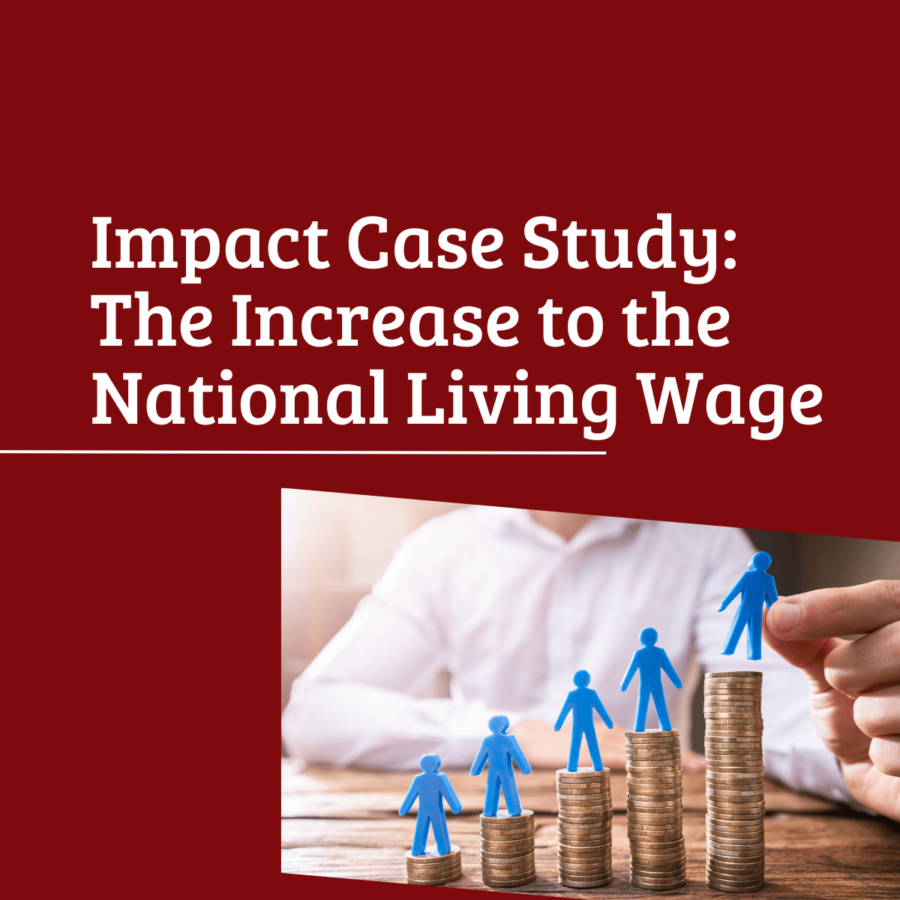What we did
Invited to contribute to an information retreat held by the Low Pay Commission (LPC), NIESR used its modelling capabilities to prepare some analysis concerning the current UK economic climate and the likely outcome of a rise in the National Minimum Wage (NMW) and National Living Wage (NLW).
What we found
Using the nowcasting methodology in the NIESR wage tracker, as well as analysis from our quarterly forecast relating to the UK economy, we assessed that there was a greater potential for persistent inflation. Whilst the labour market did show signs of loosening, its tightness at the point, as measured by the vacancy to unemployment ratio, meant that we expected high nominal wage growth to continue. More importantly, drawing on past NIESR research, we found that raising the National Minimum Wage from where it was at the time would not significantly reduce employment opportunities for lower-paid workers but would increase the productivity of firms through gains made by organisational change, training and efficiency.
When we looked at the household level, we concluded that a rise in the National Minimum Wage and National Living Wage would affect consumption, with the effect being more significant the lower the income level. It would also have the result of encouraging those at lower income levels back into work.
What happened next
Ahead of the Chancellor’s Autumn Statement it was confirmed that, from April 2024, the National Minimum Wage (NMW) and National Living Wage (NLW) would rise. In its letter recommending this, the LPC drew on the analysis presented by NIESR concerning the UK economic climate and the resilience of the labour market. In addition, its annual report (published in March 2024) cited evidence submitted via our GDP, CPI, and wage trackers, as well as our quarterly UK economic forecasts and a separate research project that it had commissioned.


